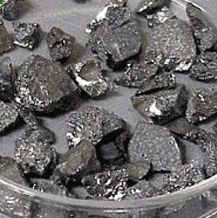Fluorescent boron-containing compounds for medicine

Carboranes (clusters composed of boron and carbon atoms) are of great interest in a wide range of applications. Medical scientists have shown a great interest in using them in the boron neutron capture therapy (BNCT). In this work, a family of high-boron dendrons have been prepared. These compounds show photoluminescence properties. Thus, their properties and high boron content make these macromolecules interesting compounds for use in BNCT cancer treatments and medicine.
Boron clusters, specially ortho-carborane derivatives, present a great synthetic versatility, and can be chemically modified with relative easiness, since they can be functionalized with a great number of organic groups and biochemical moieties. Besides, they show a high stability towards oxidizing agents and strong acids, they are very stable up to temperatures of 400 ºC and to the radiation. All these properties have made o-carborane derivatives of great interest in a wide range of applications such as catalysis, extraction of radionuclides from nuclear waste, in the preparation of hybrid materials by Sol-Gel process, as dopant in conducting organic polymers or in medical applications. In the latter, boron compounds have shown a great interest in the boron neutron capture therapy (BNCT). This therapy benefits from the radiation α generated in the capture of thermal neutrons by the 10B nuclei and is used for the treatment of malignant tumours. At present, research is focused on the preparation of high-boron content molecules, being a good approach the preparation of dendrimeric systems. It is important to note that dendrimers have also used as drug delivery systems, in special those soluble in water. For this reason, our group is interested in the preparation of dendrimers containing boron clusters.
In this work, a family of high-boron dendrons have been prepared by the reaction of α,α'-(3,5-bis(bromomethyl)phenoxy-p-xylene) and closo-carborane derivatives (Scheme 1). These neutral dendrons are soluble in a large number of organic solvents, and insoluble in water. However, the potassium salt of the corresponding anionic species that, are obtained by the deboronation reaction with KOH in EtOH, containing four nido-o-carborane clusters (Scheme 1), present water solubility and are also soluble in polar solvents, whereas their ammonium salts are soluble in organic solvents. UV-vis spectra in different solvents display a solvatochromic shift for all compounds, and a red shift of the absorption maxima for anionic species with respect to the closo-derivatives.
In addition, these compounds show photoluminescence (PL) properties in solution at room temperature, exhibiting blue emission under ultraviolet radiation. Such behaviour was completely unpredicted considering that isolated starting compounds, the α,α'-(3,5-bis(bromomethyl)phenoxy-p-xylene) and the closo-carborane derivatives, are not fluorescent at rt. Nevertheless, when these are bonded to form the new dendrons they give rise to new molecular systems that display a strong emission of fluorescence as the compound closo-4 shown in Figure 1. The fluorescence depends on the carborane derivative and the solvent polarity. Thus, their properties and high boron content make these macromolecules interesting compounds for use in cancer treatments using BNCT, and medicine.
References
Lerouge, Frederic; Vinas, Clara; Teixidor, Francesc; Nunez, Rosario; Abreu, Arturo; Xochitiotzi, Elba; Santillan, Rosa; Farfan, Norberto. "High boron content carboranyl-functionalized aryl ether derivatives displaying photoluminescent properties". DALTON TRANSACTIONS, (19): 1898-1903 2007


